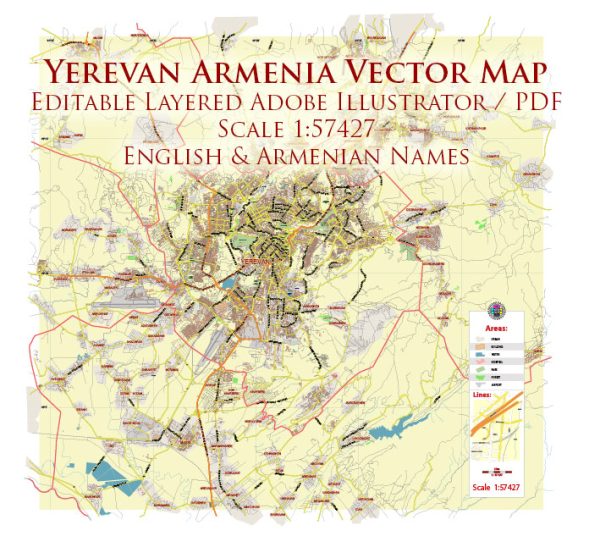Yerevan is the capital and largest city of Armenia, a country located in the South Caucasus region of Eurasia. The city has a rich and complex history that spans thousands of years. Here’s a brief overview of Yerevan’s history:
- Ancient Origins: Yerevan’s history dates back to ancient times, with evidence of settlement in the region as early as the 8th century BC. In antiquity, the city was known by various names, including Erebuni and Erivan, and it was founded by King Argishti I of Urartu in 782 BC. The city served as an important fortress and administrative center.
- Persian and Byzantine Rule: Over the centuries, Yerevan was controlled by various empires, including the Persian and Byzantine Empires. It changed hands several times, contributing to its cultural diversity.
- Russian and Soviet Eras: In the 19th century, Yerevan became part of the Russian Empire. After the Russian Revolution in 1917, Armenia declared its independence, and Yerevan became the capital of the newly formed First Armenian Republic in 1918. However, this independence was short-lived, as Armenia was eventually incorporated into the Soviet Union in 1920, becoming the Armenian Soviet Socialist Republic. Yerevan underwent significant urban development and industrialization during the Soviet era.
- Modern Armenia: Following the dissolution of the Soviet Union in 1991, Armenia regained its independence, and Yerevan continued to be the capital of the newly established Republic of Armenia. The city has since undergone substantial growth and development.
- Cultural and Architectural Heritage: Yerevan is known for its rich cultural heritage, with numerous museums, theaters, and historical landmarks. One of the most iconic sites is the Republic Square, which features grand Soviet-era architecture and is a symbol of Yerevan. Other notable landmarks include the Matenadaran, a repository of ancient manuscripts, and the Tsitsernakaberd Memorial, dedicated to the Armenian Genocide.
- Yerevan Today: Yerevan is the political, cultural, and economic center of Armenia. It is a vibrant and modern city with a mix of historical and contemporary elements. The city’s population is diverse, and it is home to people from various ethnic backgrounds.
Yerevan’s history reflects the complex tapestry of Armenia’s past, from its ancient origins to its more recent history as a Soviet republic and, ultimately, as the capital of an independent nation. The city’s historical significance, coupled with its modern development, makes it a fascinating place to visit and explore.



 Author: Kirill Shrayber, Ph.D.
Author: Kirill Shrayber, Ph.D.